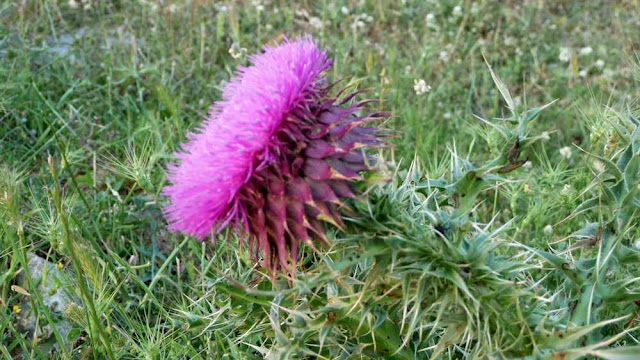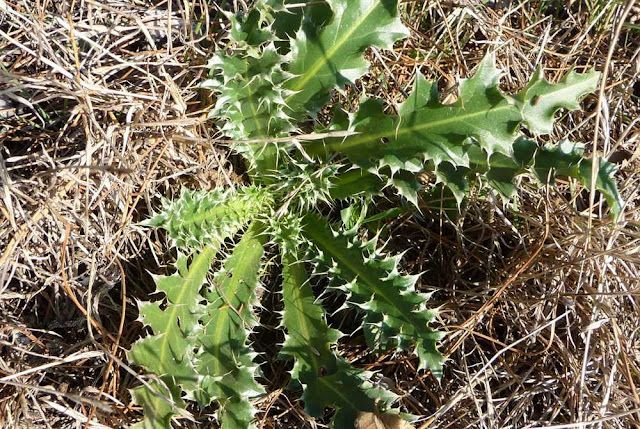Carduus, in Latin meaning "thistle", is a genus of about 90 species of thistles, native to Europe, Asia and Africa. At least twelve of these species can be found in Greece.
Carduus nutans is one of the most widespread and attractive species of this genus in Europe, parts of Asia and north Africa, whereas in North America it has been introduced long ago. Also known as Nodding Thistle for the very distinctive drooping of its flower heads, this biennial plant has violet flowers and violet tinged bracts (white occurs very rarely) that create stunning patterns in the beginning of their blooming (May through June).
There seems to be some confusion as to whether C. nutans and C. macrocephalus are closely related species or merely synonymous. Although a separate and more scarce species, C. thoermeri is very similar to C. nutans.
__________________________________________________________________
Το γένος Carduus, που στα Λατινικά σημαίνει αγκάθι, περιλαμβάνει γύρω στα 90 είδη αγκαθιών που απαντώνται στην Ευρώπη, την Ασία και την Αφρική. Τουλάχιστον δώδεκα απ΄ αυτά τα είδη μπορεί να συναντήσει κανείς στην Ελλάδα.
Το Carduus nutans είναι ένα από τα πολύ διαδεδομένα και εντυπωσιακά είδη του γένους αυτού στην Ευρώπη και σε τμήματα της Ασίας και της βορείου Αφρικής, ενώ στη Βόρειο Αμερική έχει εισαχθεί από πολύ παλιά. Το κοινό όνομά του στα αγγλικά σημαίνει το αγκάθι που νεύει ή που σκύβει, εξαιτίας της χαρακτηριστικής κλήσης του κεφαλιού των λουλουδιών του. Το διετές αυτό αγκάθι έχει έντονα βιολετί λουλούδια και χρωματισμένα βράχτια φύλλα (το λευκό χρώμα απαντάται σπάνια) τα οποία δημιουργούν εκπληκτικά μοτίβα στην αρχή της ανθοφορίας τους (Μάιο με Ιούνιο).
Φαίνεται να υπάρχει κάποια σύγχιση σχετικά με το αν τα C. nutans και C. macrocephalus είναι είδη που συγγενεύουν στενά ή πρόκειται απλώς για συνωνυμία. Όσο κι αν διαφέρει, το λιγότερο διαδεδομένο C. thoermeri έχει πολύ μεγάλη ομοιότητα με το C. nutans.



















































I love all the different pictures of this one.
ReplyDeleteVery pretty.
Thank you for all these pictures; very good!
ReplyDeleteA beautiful blog, congratulations! The seeds of these thistles are very valuable for humans to consume as tea. Little birds:finches ( http://www.1000birds.com/images/European-Goldfinch25100.jpg) dangle on top of the dry flowers as they nip at the seeds. A lovely sight!
ReplyDeleteThank you very much Alexandra!!
DeleteAs for the mandalas, I have also been greatly impressed by the harmonious shape of the annual wild flowers especially in spring, when they are just a "mandala" of leaves (of innumerous shapes and patterns)on the ground.
ReplyDeleteThis actual thistle is edible when very young and tender(it is called dragon plant in Greece- at this stage). It's thorny edges are softened when boiled. This kind of wild plants, "cabbages" as they are called in Greece are collected in late winter until spring and eaten as a salad after rinsing them well and boil them until tender (20 minutes)
ReplyDelete